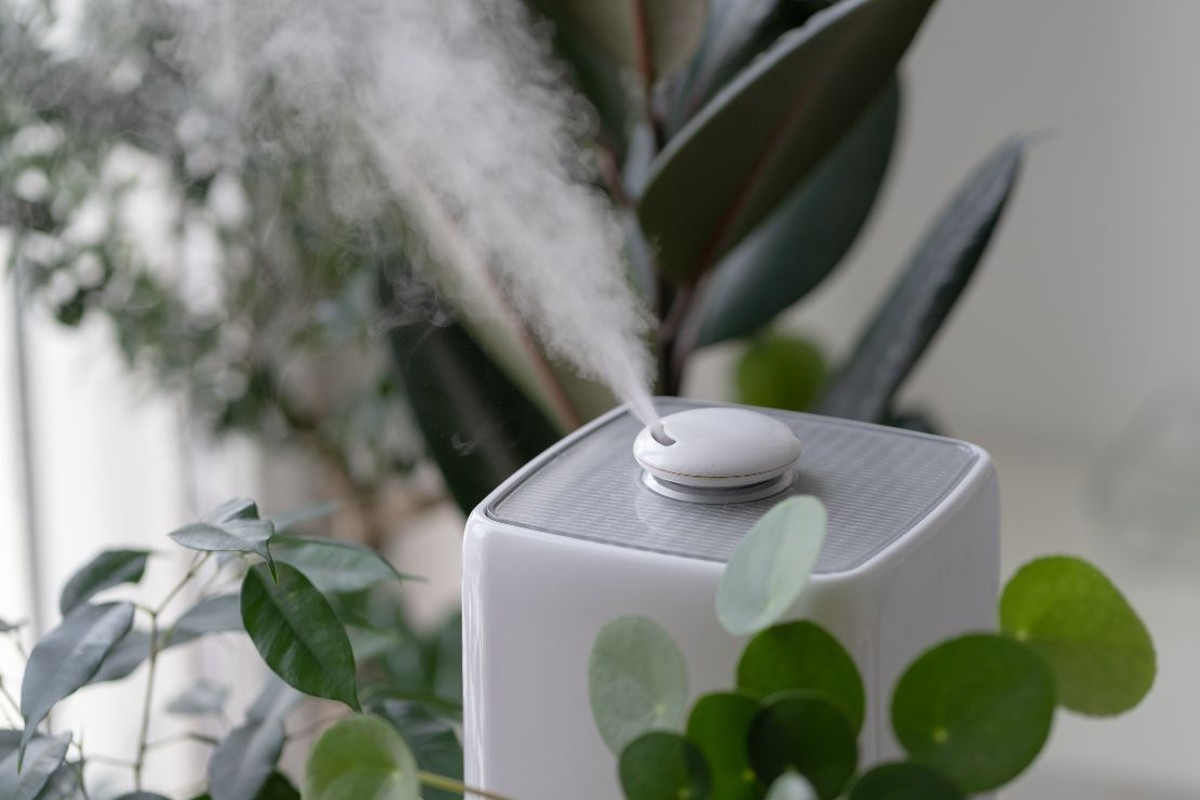Let me guess: the cold weather has already wreaked havoc on your complexion, and you’re hunting for anything to keep your skin moisturized in winter? Luckily, a few adjustments to your routine and using the right ingredients and products at the right time can quickly fix your dry winter skin issues. And if you ever wondered, no, the summer routine won’t do in the winter, so you need new allies to maintain things moist and plump.
Why is my skin dry in winter?
Skin tends to dry out more in winter due to the low humidity in the environment, which increases transepidermal water loss (TEWL) and impairs the moisture barrier.[1][2] You see, the skin can naturally retain water from the environment, which is how it remains hydrated. However, when the humidity levels are low, the skin has no choice but to pull water from its deeper layers to the surface. Once the water reaches the surface, it’s quickly evaporated into the environment, causing an upsurge in transepidermal water loss. You’re not guarded from dehydrated skin during winter even if you don’t leave your room since the forced heat lowers the humidity levels in your house.
How to keep skin moisturized in winter
The good news is that there is an array of methods to keep your skin moisturized in winter, and here we stick only to the tried-and-true ones. Just abide by them, and dry winter skin will become a thing of the past.
Use occlusives
We know you rely on humectants like hyaluronic acid and glycerin to keep your complexion moist (we all do), but in winter, they can actually have the opposite effect and dehydrate the skin. Studies found that humectants increase water loss and can exacerbate skin dryness when the humidity is lower than 70%, which is quite common during cold weather.[3] For this reason, you should use occlusives to keep your skin moist in winter.
Occlusives are agents that form a protective film over the skin’s surface to reduce TEWL, so they’re one of the best treats for dry winter skin. They also help seal the moisture the humectants have pulled from the environment so it won’t evaporate. Common occlusives found in skincare include mineral oil, petroleum jelly, beeswax, shea butter, squalane, and dimethicone. Most moisturizers contain occlusives too, but in case yours doesn’t, you should purchase one of these.
Related: The Differences Between Emollients, Humectants, and Occlusives
Limit the time spent in showers
Hot showers or long baths can strip skin of moisture as well as damage the surface, so it’s best to avoid them as much as possible during winter. When you still do it, though, it’s important to pat (not rub) your skin dry and then apply an emollient moisturizer to lock the moisture in and minimize the drying effects of hot water.
Use a non-stripping cleanser
If you have dry winter skin, using a non-stripping cleanser is non-negotiable to dodge dehydration and keep your complexion moisturized. Although this is self-explanatory, you should steer clear of fragrance and high concentrations of exfoliants and embrace face washes with hydrating and revitalizing formulas. You can’t go wrong with CeraVe Hydrating Facial Cleanser; just saying.
Exfoliate more
Contrary to expectations, exfoliation is one of the best treatments to keep your skin moisturized during the winter months — dead cells build up on the skin’s surface no matter the season, so you need to slough them off regularly to dodge dullness and dehydration. In fact, the cold, dry weather just means your complexion craves more exfoliation than usual.
In winter, it’s best to use a manual exfoliator or a chemical one containing alpha-hydroxy acids (AHAs) like glycolic and lactic acids. Besides eliminating surface buildup and increasing cell turnover, AHAs also help boost hydration since they act as humectants. Just make sure you seal the moisture with occlusives after you exfoliate; otherwise, AHAs can actually increase water loss and worsen dryness. Another benefit of exfoliation is that it allows the moisturizer to penetrate deeper into the skin so that it can hydrate more effectively.
But as good as exfoliation can be for dry winter skin, you shouldn’t do it more than two or three times a week to allow the barrier to repair itself. Over-exfoliation can lead to all sorts of skin issues, including dehydration and increased sensitivities, so be extra cautious.
Related: The Different Types of Exfoliants And Which One You Should Use
Use a humidifier
A humidifier also helps a lot in preventing dry winter skin because it maintains adequate humidity in your home during the cold season, allowing your skin to draw moisture from the air to hydrate itself. Keep the humidity level above 70% so that both your skin and humectants can pull water from the environment.
Avoid products with drying alcohol and fragrance
Products with drying alcohol and fragrance are a big no-no in winter since they can dehydrate the skin and cause irritation. So switching to an alcohol-free moisturizer is nothing but a clever idea.
Slather a vitamin C serum in the morning
Vitamin C serums are the backbone of any routine, and they’re even more of a necessity in winter. This is because vitamin C has an important role in the formation of the skin’s outermost layer since it stimulates the production of ceramides. Hence, it can improve the skin’s ability to retain and maintain moisture as well as protect itself from water loss.[4] Also, studies found that dry winter skin is closely related to the loss of ceramides, and vitamin C mitigates the impact by building more lipids in the skin.[5][6]
So slathering a vitamin C serum in the morning can help a lot in keeping your skin moistened and protected in the winter. Even more, they work to enhance radiance, soften fine lines, and firm the skin all at once.
Use a reparative moisturizer at night
While for the day, it’s OK to use a lightweight moisturizer, at night, you need a reparative formula filled with emollients to support skin repair and fortify the barrier for the next winter day. As such, look for ceramides, fatty acids, cholesterol, vitamin E, and squalane since they’re emollients with softening effects and help restore the protective barrier.
For instance, ointments work great for dry, chapped skin and in low-humidity environments, and they’re mostly made of occlusives and emollients. If your skin is not excessively oily, you should try one.
Try slugging
Speaking of how good occlusives are for keeping skin moist in winter, have you heard of slugging? It’s a method that involves using a heavy layer of petrolatum as the last step of your nighttime routine to trap what you have previously applied and hinder moisture loss. In other words, slugging can be a skin savior in winter because it decreases water loss, strengthens the moisture barrier, and, nevertheless, increases product absorption.
P.S: Don’t slug if your moisturizer already has a meaningful concentration of occlusives or if you’re using an ointment at night.
Skincare routine to prevent and treat dry winter skin
The following skincare routine will help keep your skin moisturized and plump in winter, even on the coldest days:
AM
- Wash your face with a non-stripping cleanser and lukewarm water.
- Use a gentle toner to balance your skin’s pH.
- Apply a vitamin C serum for antioxidant protection and enhanced moisture retention.
- Use a lightweight moisturizer containing a blend of humectants (like hyaluronic acid and glycerin) and occlusives (such as petrolatum, squalane, and shea butter).
- Optionally, apply a face oil rich in hydrating and nourishing ingredients.
- Finish with sunscreen.
PM
- Wash your face with a delicate cleanser and lukewarm water.
- Apply toner.
- Slather a hyaluronic acid serum to replenish water levels.
- Apply a reparative and emollient moisturizer infused with ceramides, cholesterol, and fatty acids to restore the barrier. It could be a rich cream, oil-based moisturizer, or balm.
- Trap everything in with petrolatum or other occlusives (slugging).
Read next: The 12 Best Products To Quench Your Dehydrated Skin ASAP
Sources
Women’s Concepts uses reliable sources, including dermatologists’ insights, clinical trials, and scientific journals, to find accurate information and support all the facts shared in our articles. All statements and claims have clear and legit references. Read our editorial policy to learn more about our sources of information, our process of researching and fact-checking the content, and how our team strives to keep all articles updated, completed, and trustworthy.
- Engebretsen KA, Johansen JD, Kezic S, Linneberg A, Thyssen JP. The effect of environmental humidity and temperature on skin barrier function and dermatitis. J Eur Acad Dermatol Venereol. 2016 Feb, https://pubmed.ncbi.nlm.nih.gov/26449379/
- Egawa M, Oguri M, Kuwahara T, Takahashi M. Effect of exposure of human skin to a dry environment. Skin Res Technol. 2002 Nov, https://pubmed.ncbi.nlm.nih.gov/12423539/
- Harwood A, Nassereddin A, Krishnamurthy K. Moisturizers. Treasure Island (FL): StatPearls Publishing; 2022 Jan-. Available from: https://www.ncbi.nlm.nih.gov/books/NBK545171/
- Kim KP, Shin KO, Park K, Yun HJ, Mann S, Lee YM, Cho Y. Vitamin C Stimulates Epidermal Ceramide Production by Regulating Its Metabolic Enzymes. Biomol Ther (Seoul). 2015 Nov, https://www.ncbi.nlm.nih.gov/pmc/articles/PMC4624068/
- Ponec M, Weerheim A, Kempenaar J, Mulder A, Gooris GS, Bouwstra J, Mommaas AM. The formation of competent barrier lipids in reconstructed human epidermis requires the presence of vitamin C. J Invest Dermatol. 1997 Sep, https://pubmed.ncbi.nlm.nih.gov/9284103/
- Ishikawa J, Yoshida H, Ito S, Naoe A, Fujimura T, Kitahara T, Takema Y, Zerweck C, Grove GL. Dry skin in the winter is related to the ceramide profile in the stratum corneum, https://pubmed.ncbi.nlm.nih.gov/23438136/





